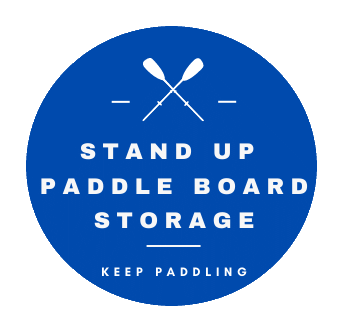Find the Right SUP Storage for You
Proper storage of your stand up paddle board (SUP) is crucial for maintaining its condition and maximizing its lifespan. When it comes to storing your SUP, you have two primary options: vertical and horizontal storage. Both methods have their advantages and disadvantages, depending on your space, preferences, and specific needs. In this article, we’ll compare the pros and cons of vertical and horizontal SUP storage to help you choose the right solution for your paddle board organization.
Vertical SUP Storage
Pros:
- Space-saving: Vertical storage allows you to maximize floor space by utilizing wall height. This is particularly advantageous for those with limited storage areas or multiple paddle boards.
- Accessibility: Storing your SUP vertically makes it easy to grab and go, as you don’t need to lift the board off of overhead storage racks or shelves.
- Stability: With a sturdy base and proper support, vertical storage racks can provide a stable and secure storage solution for your paddle board.
Cons:
- Wall Damage: Vertical storage racks may require more extensive installation, including drilling into walls, which can potentially cause damage if not done properly.
- Limited Weight Distribution: Storing your SUP vertically can concentrate weight on the lower portion of the board, potentially causing warping or damage over time if not adequately supported.
Horizontal SUP Storage
Pros:
- Even Weight Distribution: Horizontal storage ensures that your paddle board’s weight is evenly distributed, minimizing the risk of warping or damage over time.
- Versatility: Horizontal storage racks can be mounted on walls, ceilings, or even in overhead spaces, providing more flexibility in placement.
- Aesthetic Appeal: Storing your SUP horizontally can create a visually appealing display, particularly if you have multiple boards with unique designs.
Cons:
- Accessibility: Depending on the height and location of your horizontal storage rack, it may be more challenging to access your paddle board, particularly for shorter individuals or those with limited mobility.
- Space Requirements: Horizontal storage can take up more wall or ceiling space compared to vertical storage, which may not be ideal for those with limited storage areas.
Conclusion
Both vertical and horizontal SUP storage methods offer unique advantages and disadvantages, and the best choice for your stand up paddle board storage will depend on your individual needs and preferences. If you’re short on space and prioritize accessibility, vertical storage may be the better option. On the other hand, if you’re more concerned with even weight distribution and versatility in placement, horizontal storage might be the way to go. By considering the pros and cons of each method, you can make an informed decision and find the perfect storage solution for your paddle board organization.



Recent Comments